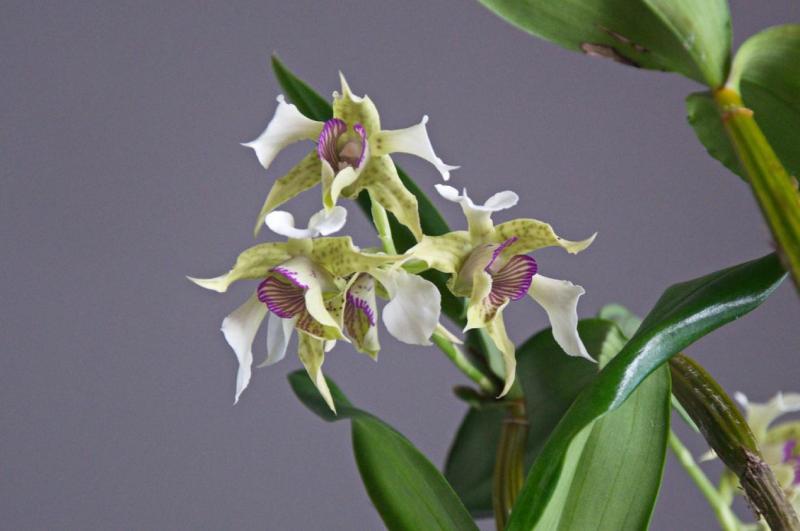Dendrobium atroviolaceum
Also known as: The Black Blood or Dendrobium normanbyense Dendrobium atroviolaceum h.v. pygmy Latourorchis atroviolacea Latourea atroviolacea Sayeria atroviolacea Dendrobium macgregorii in the subfamily: Epidendroideae
General Information
The Black Blood is a medium sized sympodial warm to hot growing epiphytic free-flowering orchid belonging to the sub family Epidendroideae.
Plant Description
Sympodial. Grows to 20-42cm. Each new growth has numerous erect rigid, elliptic leaves that grow to 8-12cm long. Pseudobulbs grow to 12-30cm
Flowers
Numerous long lasting, fragrant blossoms appear readily
Fragrance
The orchid is fragrant.
Substrate(s)
- Coarse
- Bark
Care Notes
These orchids like to be watered regulary, especially during warm weather, and prefer a well draining mix or also do well mounted, provided they can be watered daily or even many times a day.
These are quite a forgiving orchid, there are no special requirements to get this orchid to flower, just good care and consistent conditions. Larger plants may be more fussy and can react poorly to change; a poorly timed repotting, a pest infection or an unusually hot day can set them back for a couple of years. However, even plants that have been treated poorly can thrive, and if they are set back they often recover much stronger then they would otherwise be.
Fragrant:- IsFragrant
Climate
Grows at low elevations. Rainfall ranges from 155mm to 305mm per day, heaviest in November and lightest in June. Temperature ranges from 19C to 28C, highest in August (22C to 28C) and lowest in February (19C to 24C).
Watering
These orchids prefer a constant supply of moisture, with a slight drying out between waterings. Saucers can be placed under pots to retain moisture during hot weather, however the saucers should be removed or let to dry every 1-2 weeks to prevent rot. Keep an eye on the plant especially in hot weather and look for cues of under/overwatering and adjust accordingly.
Fertiliser
Apply liquid based fertiliser per recommended directions. They can benefit from a high phosphate fertiliser leading up to flowering season, followed by a high nitrogen fertiliser when new growth appears, and a balanced fertiliser in other times. These orchids can also tolerate slow release fertiliser applied 1-2 pellets per cup (250ml) of media.
Use balanced fertiliser year round. Apply fertiliser regularly at half strength year round.Potting
These plants are quite forgiving and will do well repotted ever 2-3 years. The mix should be coarse, well draining, and allow space for air to move and for roots to grow.
Alternatively, these plants will also do well mounted to tree fern or cork slabs, or mounted to trees.
Best time for repotting or mounting the orchids is the end of winter when new growths start to appear. Avoid repotting during hot weather,





















